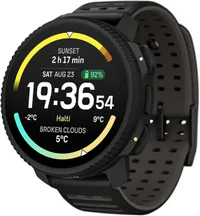I swapped my Garmin Fenix 8 Pro for the Suunto Vertical 2 — here’s 5 things I liked and 5 I disliked
Should you make the move from Garmin to Suunto?
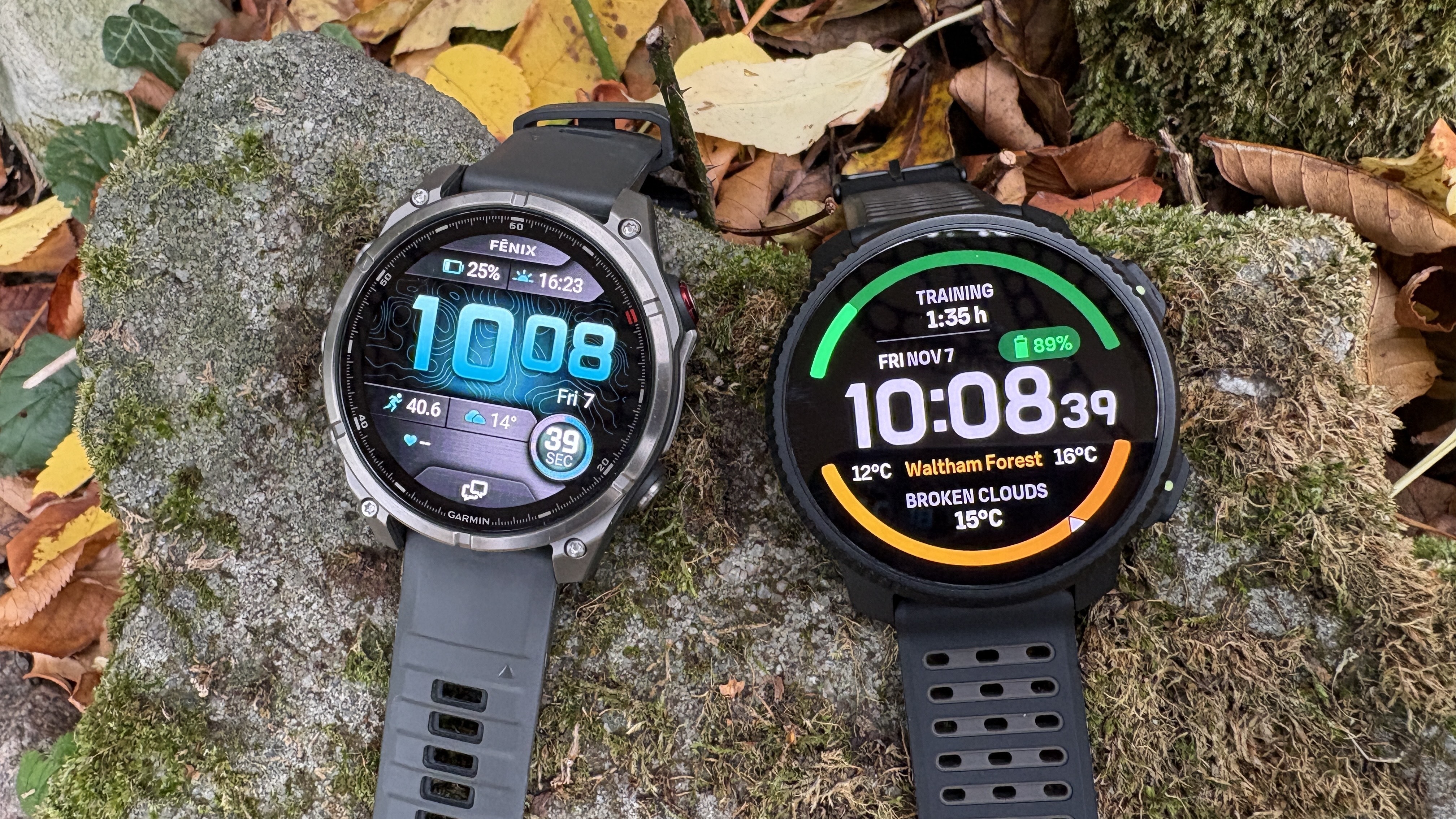
The Garmin Fenix 8 Pro is the most feature-rich and impressive sports watch available, offering satellite connectivity on top of its reliable and detailed sports tracking and training analysis. It is, however, also the most expensive sports watch out there, and double the price of competitors from other brands, including the Suunto Vertical 2.
I’ve been testing the Vertical 2 over the past few weeks to see how it shapes up compared with the Fenix 8 Pro, and the Suunto impressed on multiple counts, especially battery life.
While it can’t replace everything the Fenix 8 Pro does, if you want a one of the best sports watches with maps and a built-in flashlight, the Suunto Vertical 2 is a good affordable alternative for those unwilling to spend over $1000 on the Garmin. I’ve listed what I liked and disliked about the Vertical 2 compared with the Fenix 8 Pro below.
Garmin Fenix 8 Pro vs Suunto Vertical 2: price
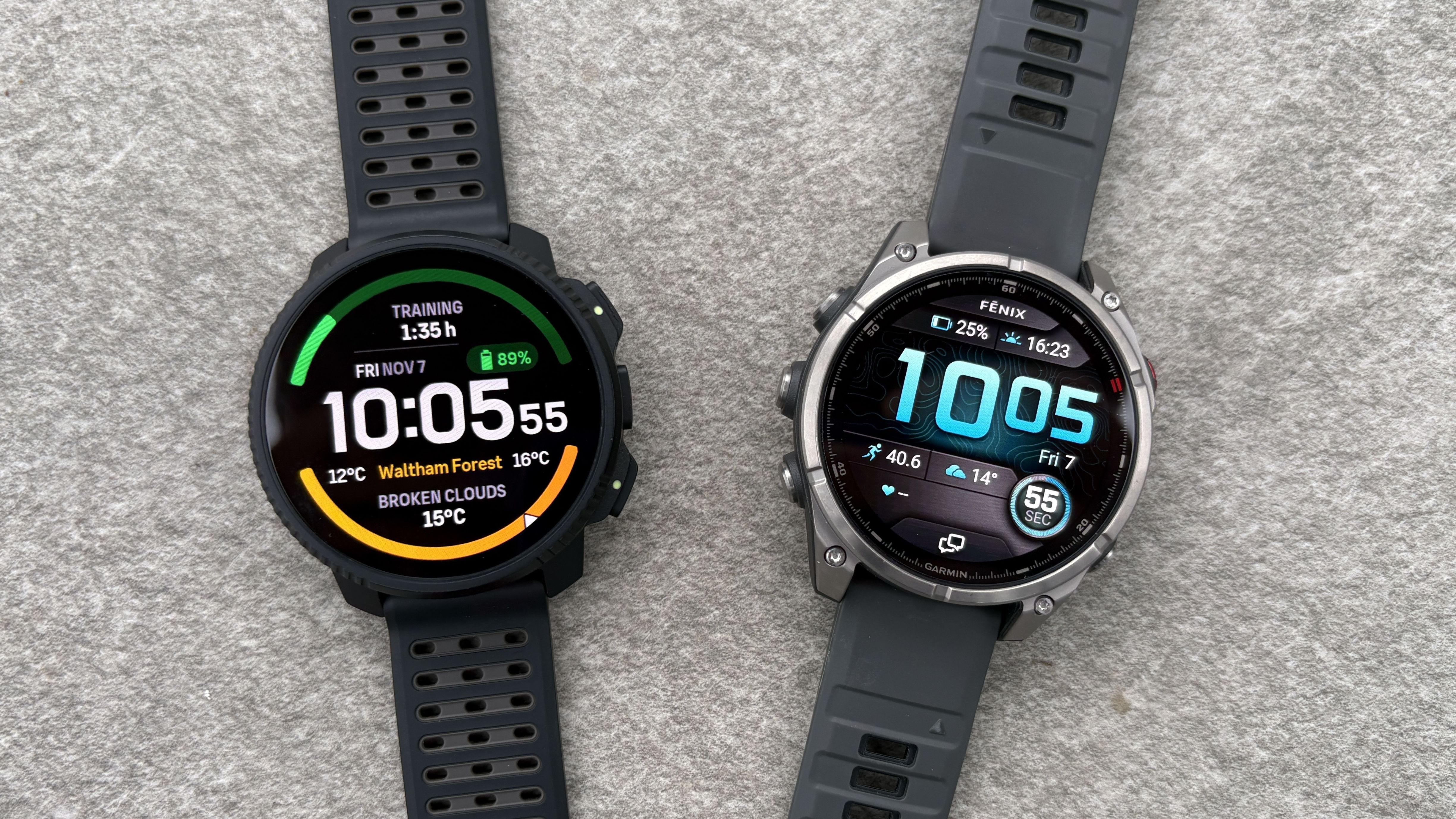
Price is certainly a major factor when picking between these two watches, because the Fenix 8 Pro is very expensive. It costs $1,199.99-$1,299.99 for the AMOLED model of the watch I tested, and a cool $1,999 for the Garmin Fenix 8 Pro MicroLED.
The Garmin Fenix 8 Pro is available with either an AMOLED or MicroLED display, with the AMOLED watch coming in 47mm and 51mm sizes. It's the top Garmin available, and the most feature-rich sports watch you can get.
The Suunto Vertical 2 is not a cheap watch, but it’s a lot cheaper than the Fenix 8 Pro, costing $599 for the steel model of the watch I tested, and $699 for the titanium model.
The Vertical 2 is Suunto's top sports watch and comes in steel and titanium models. It's laden with sports tracking features and has a built-in flashlight, and offers the longest battery life of any AMOLED sports watch I've tested.
Garmin Fenix 8 Pro vs Suunto Vertical 2: specs
| Row 0 - Cell 0 | Suunto Vertical 2 | Garmin Fenix 8 Pro AMOLED |
Price | $599-$699 | $1,199-$1,299 |
Size | 49mm | 47mm or 51mm |
Thickness | 13.5mm | 16mm (47mm), 16.5mm (51mm) |
Weight | 87g (steel), 74g (titanium) | 77g (47mm), 90g (51mm) |
Bezel | Steel or titanium | Titanium |
Screen material | Sapphire crystal | Sapphire crystal |
Display | 1.5in AMOLED | 1.4in AMOLED |
Connectivity | N/A | LTE & satellite |
Smartwatch battery life | Up to 20 days | Up to 15 days (47mm), Up to 27 days (51mm) |
GPS battery life (multi-band, always-on) | 60 hours | 23 hours (47mm), 41 hours (51mm) |
Like #1: Great design
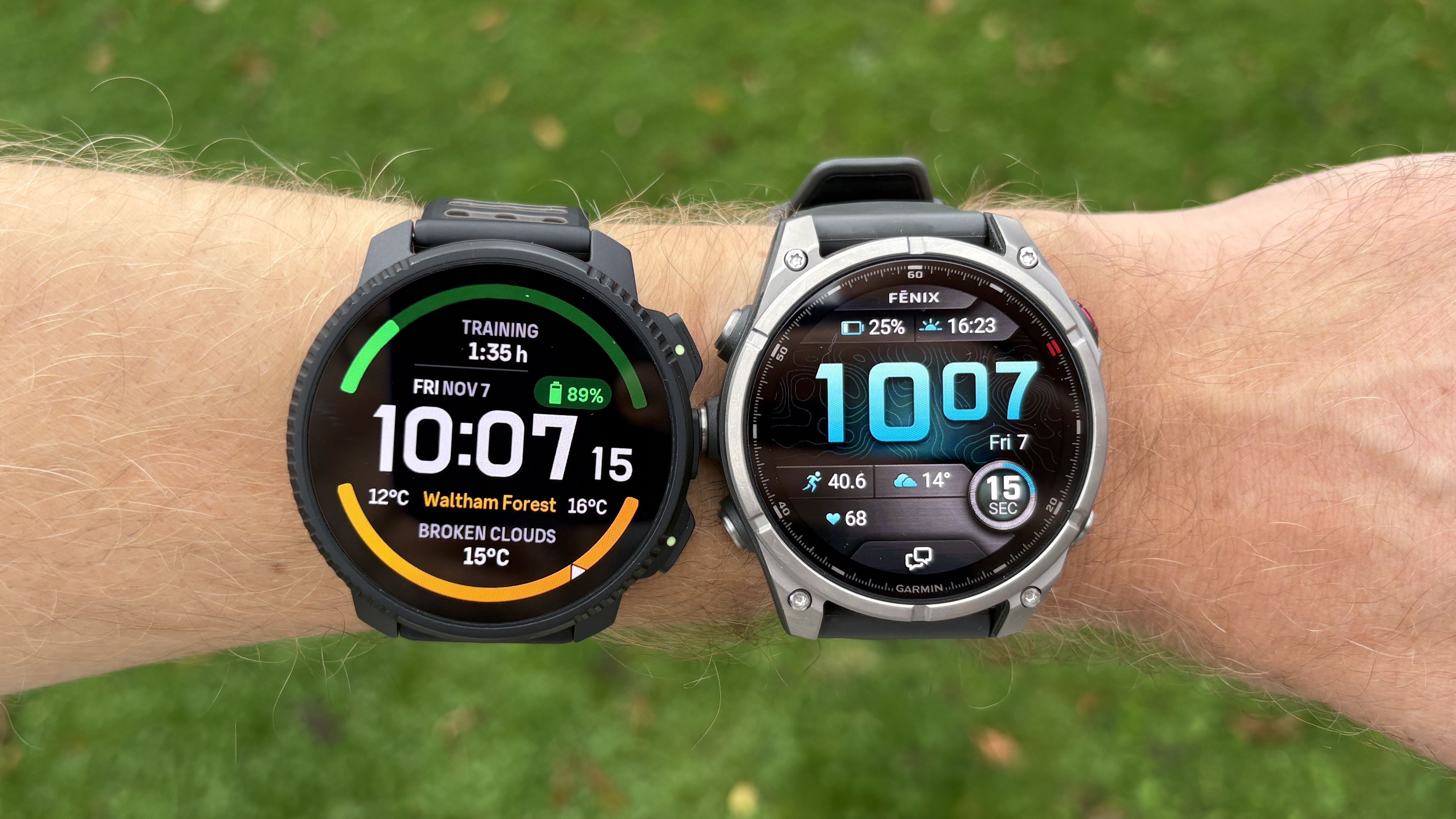
I tested the steel model of the Suunto Vertical 2 and it’s a sleek and attractive watch. It has a huge 1.5in AMOLED display and long battery life, so it’s not a small or light watch, but it feels quite slim on the wrist and I found it comfortable even on my thin wrists.
The display is bigger than the one on the Garmin Fenix 8 Pro, and the Suunto is thinner as well. Both are rugged, hardy watches built for the great outdoors, and although the Fenix 8 Pro has an advantage in being diveproof, the Suunto Vertical 2 is also waterproof to 100m and I have no fears about the durability of its design.
Get instant access to breaking news, the hottest reviews, great deals and helpful tips.
Like #2: Long battery life
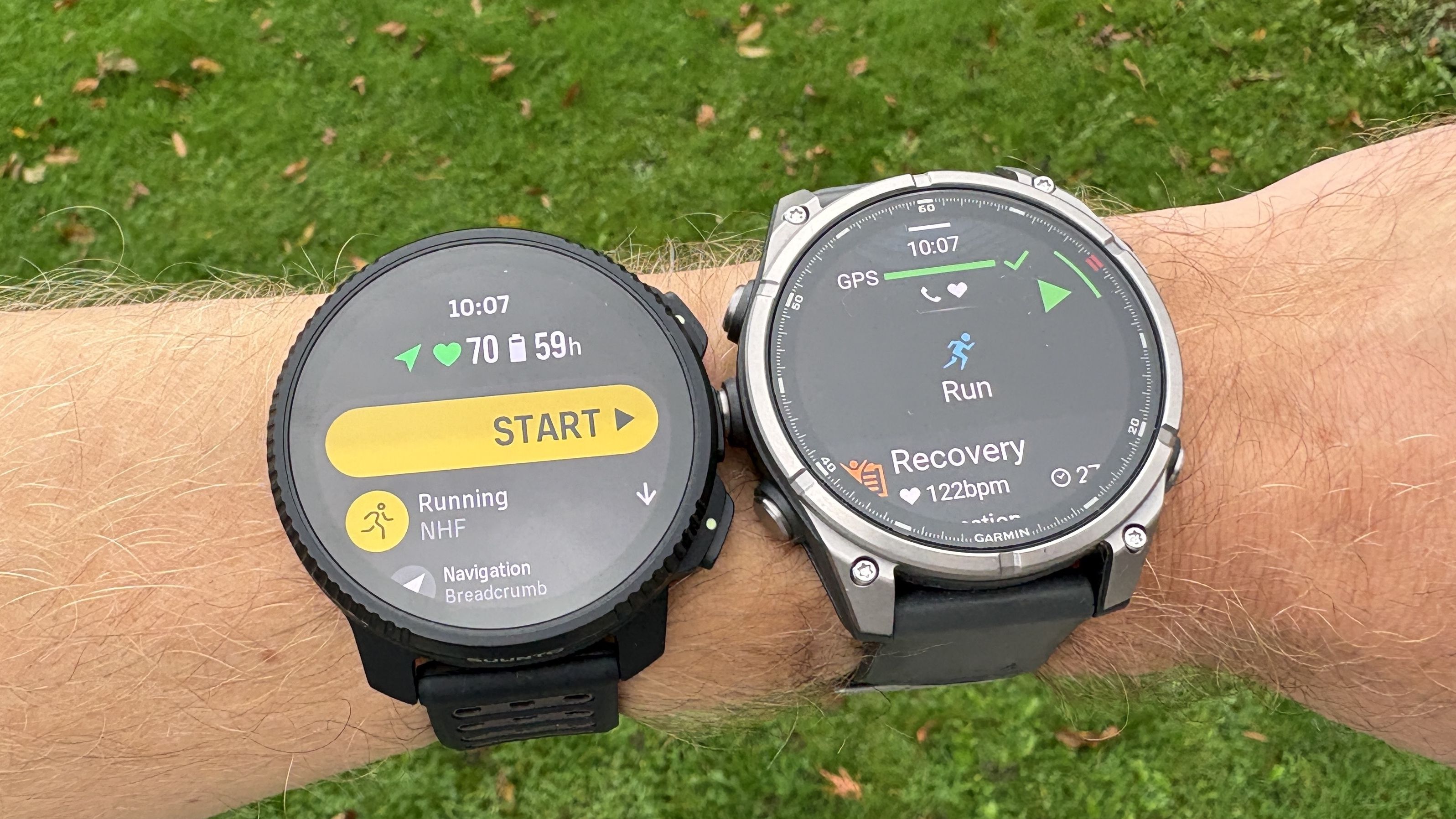
This is an area where the Vertical 2 really shines, because it has the longest battery life I’ve come across on an AMOLED sports watch. It can last up to 20 days in watch mode, and offers up to 65 hours of multi-band GPS tracking (60 hours with the screen always-on).
I had the screen set to always-on and tracked outdoor workouts every day, and the Vertical 2 lasted me 12 days on a charge. The Garmin Fenix 8 Pro 47mm usually lasts me four or five days with similar use, and even the larger Fenix 8 Pro 51mm only offers 53 hours of multi-band GPS (41 hours always-on).
Like #3: Reliable GPS accuracy
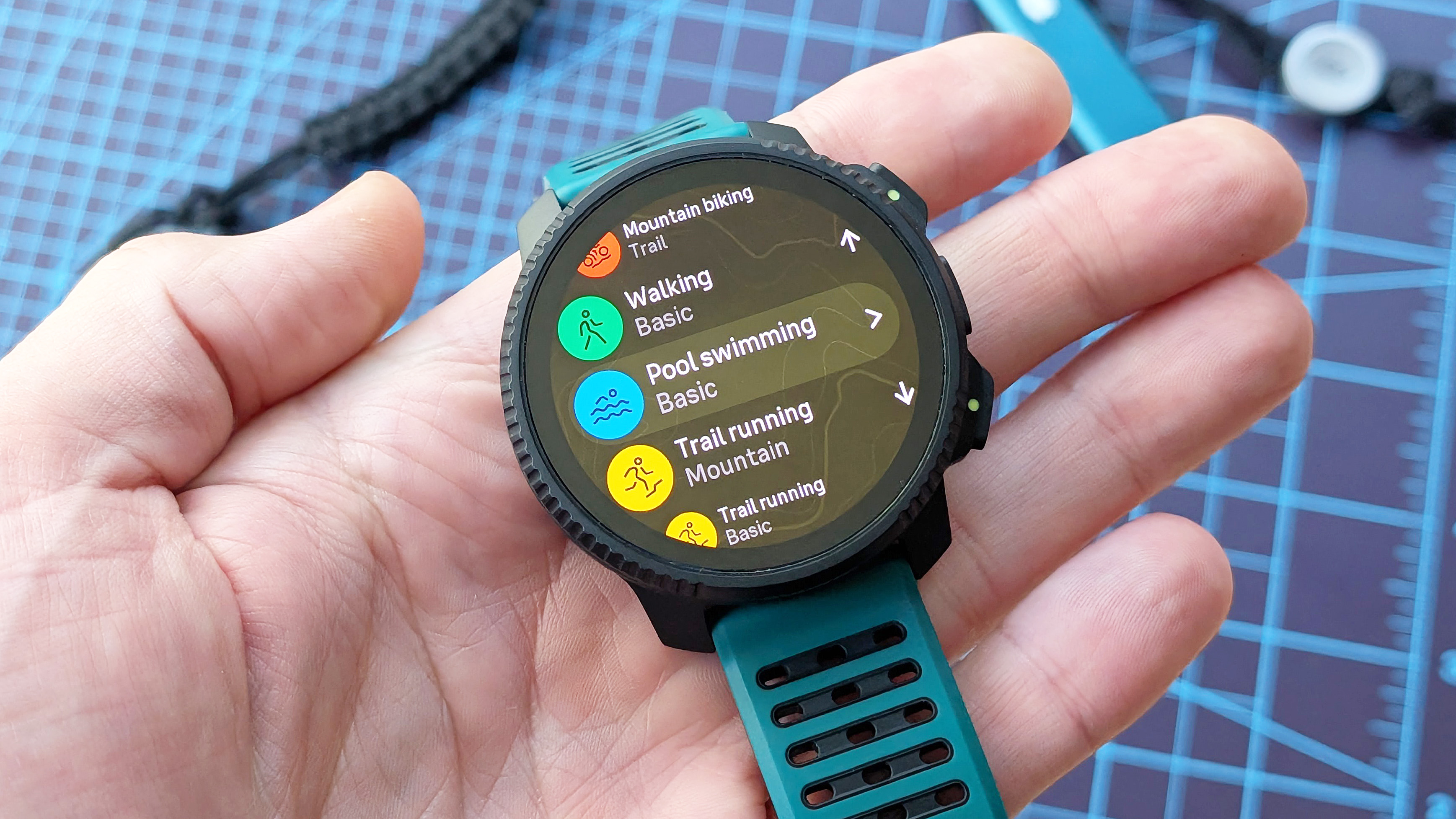
I’ve been impressed with the GPS accuracy of the multi-band tracking on Suunto watches since the original Vertical came out, and the Vertical 2 was excellent on this front.
I checked the GPS tracks produced by the watch after my runs, and never saw any notable errors, and the pacing and distance stats lined up with other accurate devices like the Garmin Forerunner 970 and Fenix 8 Pro.
Like #4: Maps and routing features
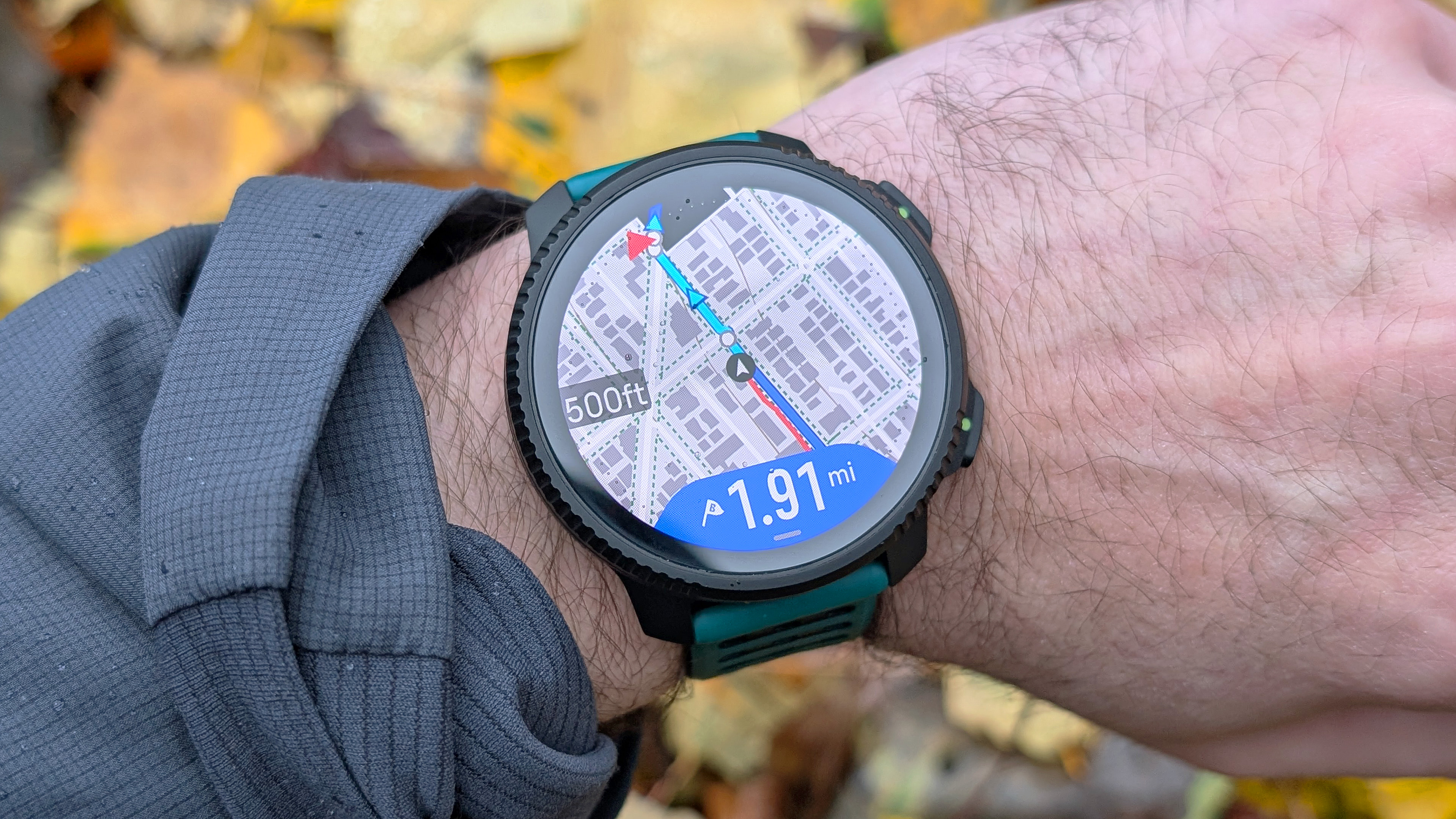
You can download maps to the Vertical 2 through the Suunto app and while they are not ‘routable’ maps like those on the Fenix 8 Pro, which can create routes on the fly, the maps on the Suunto are bright and clear to read during activities.
It’s also simple to create routes within the Suunto app and send them to the watch and you then get turn-by-turn directions and also guidance for individual climbs on your route, so you can see how much uphill is to come.
Like #5: The price
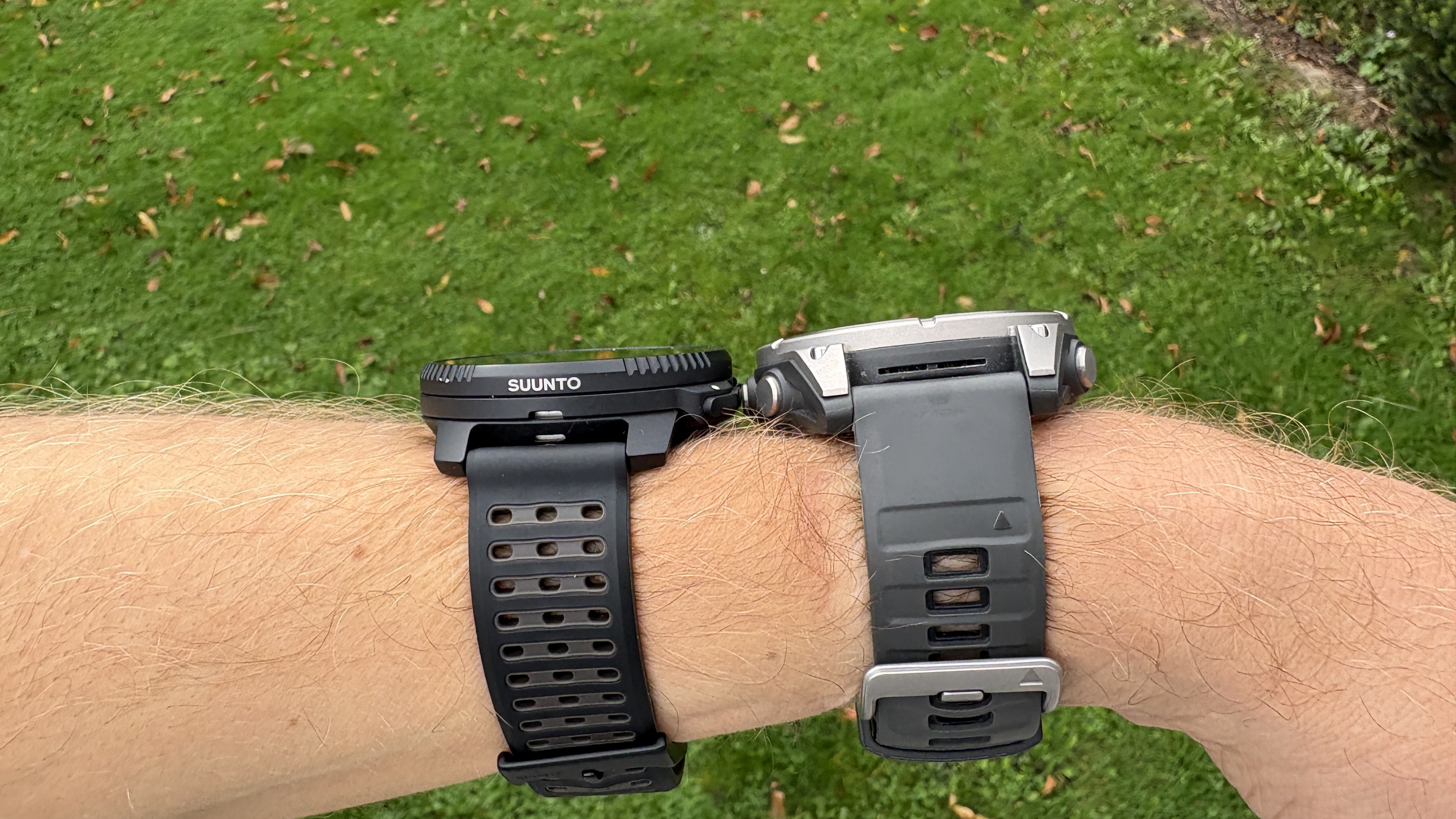
Above all, the main reason you’d consider the Vertical 2 over the Fenix 8 Pro is its price, which is reasonable for a durable sports watch with this many features. The price of the Fenix has risen dramatically with recent models — it was $699 for the standard Fenix 7, but now the cheapest Fenix 8 Pro is $1,199, which creates a lot of room for brands like Suunto to undercut the watch.
Dislike #1: Inaccurate heart rate tracking
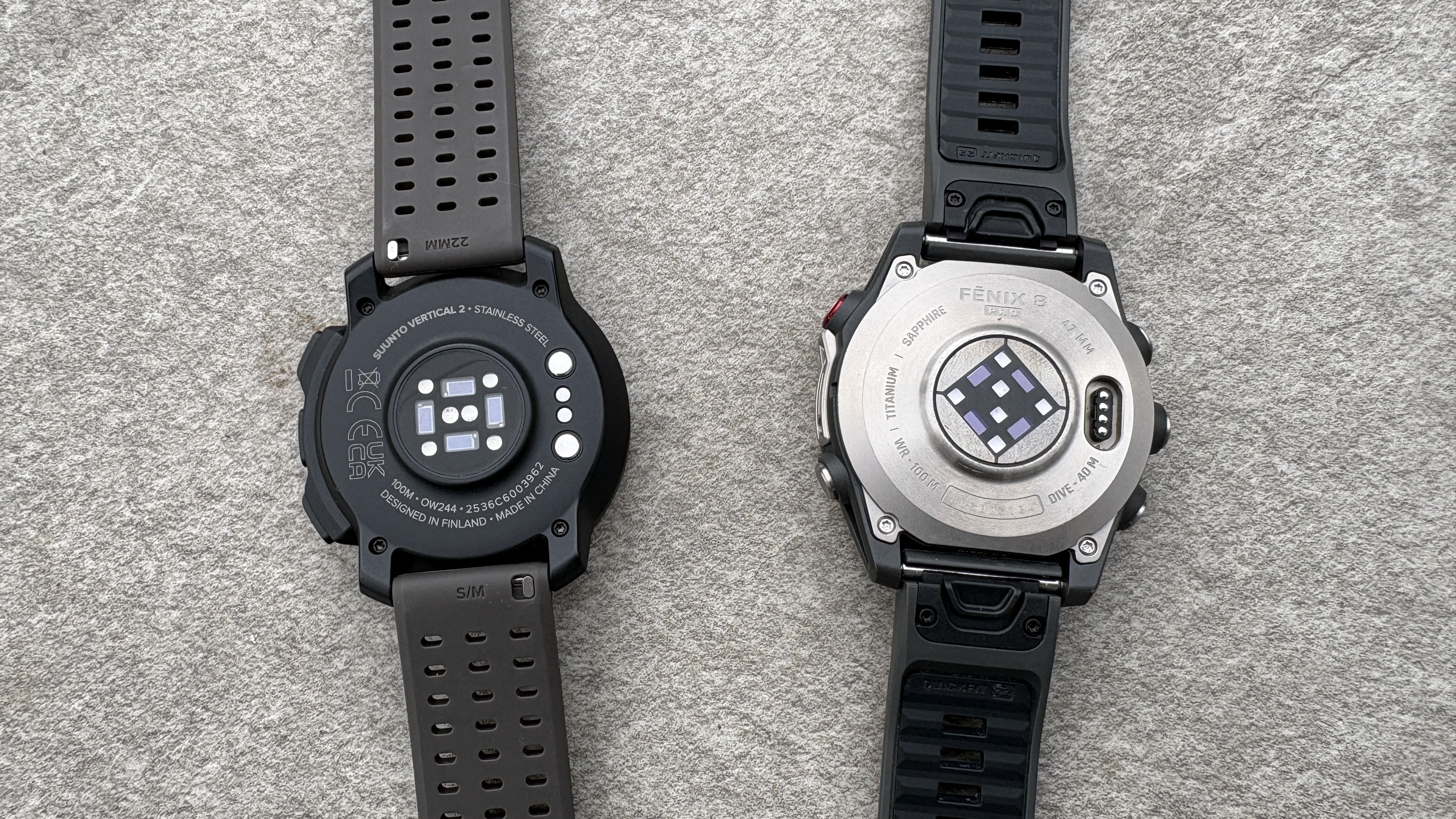
The Suunto Vertical 2 has a new and improved optical HR sensor, but I still found it often failed to match the readings from a chest strap monitor during my runs. It often read way too high, especially at the start of runs, and when I did intervals with the watch, it struggled to read the ups and downs of my heart rate consistently.
In contrast, Garmin’s optical heart rate tracking has generally been very reliable for me, and this has been the case with the Fenix 8 Pro. You’ll still get the best results with a chest strap, but I was able to use the Fenix 8 Pro’s optical tracking to guide my training when required.
Dislike #2: Limited smart features

Garmin has done a good job of bringing useful smarts to its line-up, and the Fenix 8 Pro has music storage, NFC payments, and access to the Connect IQ app store, which does have a handful of useful apps.
The Suunto Vertical 2 can add SuuntoPlus apps and could add music storage as a feature in the future (it has 32GB of storage space and this feature is available on the cheaper Suunto Run), but it’s not as customizable or as smart as the Fenix 8 Pro, especially as the Garmin also has LTE and satellite connectivity.
Dislike #3: Fewer training analysis features
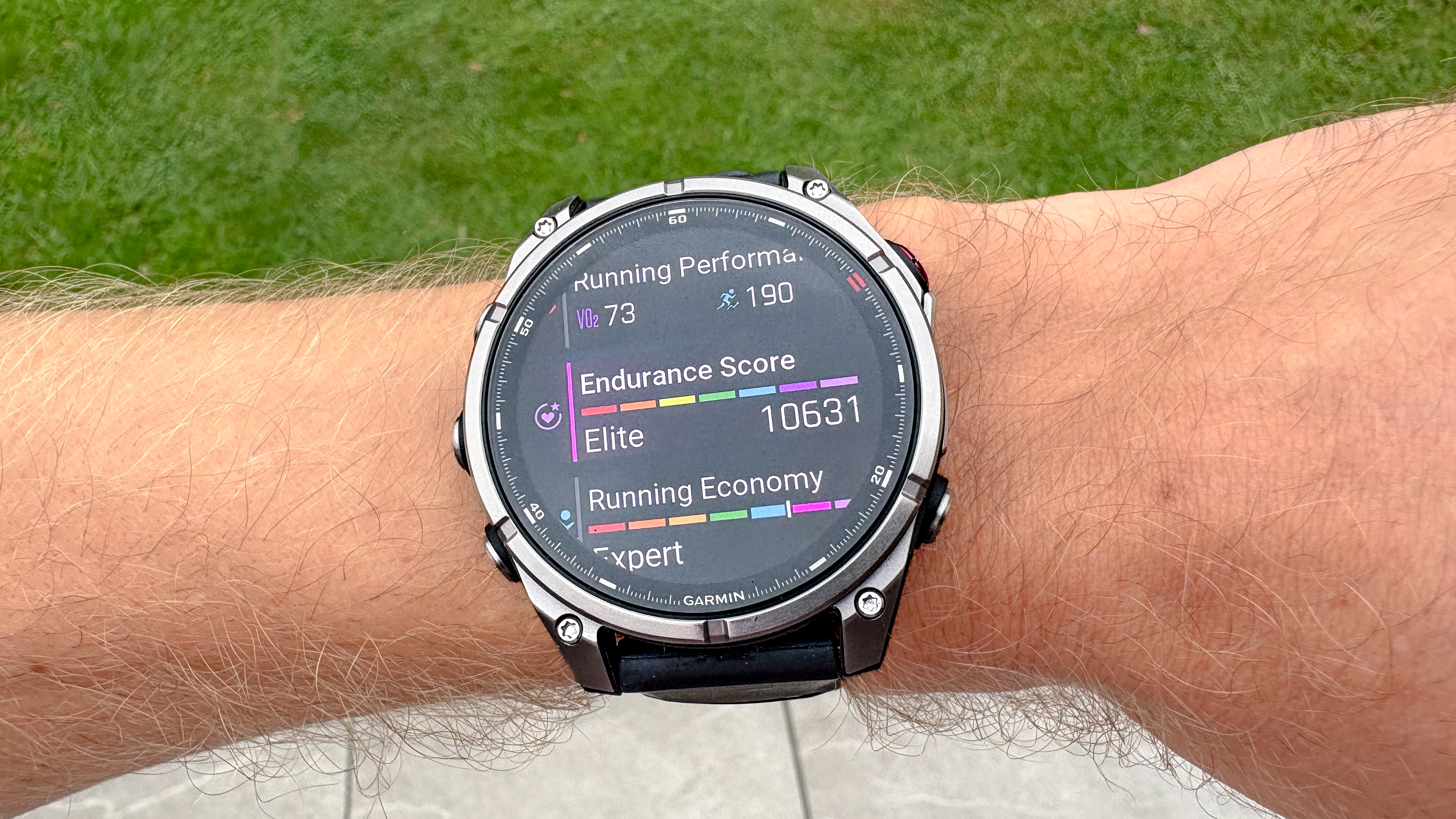
The training analysis on the Suunto Vertical 2 is comprehensive enough to satisfy most endurance athletes, though it takes some time to get your head around the acronym-laden graphs and analysis.
The Garmin Fenix 8 Pro offers more features on this front, including training readiness, advanced insights into your running form, and advice on how well you’re adjusting to heat or altitude. I think Garmin also presents this data in a more engaging and easy-to-understand way, with color-coded graphs and quick explanations of each stat.
Dislike #4: No satellite connectivity

The Garmin Fenix 8 Pro is the first Fenix to offer LTE and satellite connectivity, which makes it an even more impressive device for outdoor adventures where you head off the grid or leave your behind.
You can send messages and your location, and I found the LiveTrack feature useful throughout my testing, especially when running the Loch Ness Marathon with it enabled so my family could track my progress.
It’s an added expense since you need a contract through Garmin to use the services, but it sets the Fenix 8 Pro apart from other adventure watches, and this connectivity will be an invaluable feature to some.
Dislike #5: Poor step and sleep accuracy

Over years of testing Suunto products I’ve always found the accuracy of the sleep tracking to be sub-par, and the Vertical 2 consistently overestimated my time asleep by a huge amount, mostly because it logged times when I was still in the evening as light sleep.
The step tracking is also wildly inaccurate for me, with the Vertical 2 showing consistently very low step counts. This is highlighted by the steps counted during runs — on a 13.4-mile run it suggested I took just 10,598 steps. This would require a stride length of over 2m, even though the watch itself said my stride length was 1.32m during the run.
I’m not too worried about my step counts in general, but it was notable how much lower they were on the Vertical 2 compared with other watches and even my phone.

Follow Tom's Guide on Google News and add us as a preferred source to get our up-to-date news, analysis, and reviews in your feeds.
More from Tom's Guide
- I just ran a marathon with the Apple Watch Ultra 3 vs. Garmin Fenix 8 Pro — here’s the winner
- Apple Ring — everything we know so far about Apple's rumored smart ring
- Garmin Fenix 8 vs. Garmin Fenix 8 Pro: should you upgrade?

Nick Harris-Fry is an experienced health and fitness journalist, writing professionally since 2012. He spent nine years working on the Coach magazine and website before moving to the fitness team at Tom’s Guide in 2024. Nick is a keen runner and also the founder of YouTube channel The Run Testers, which specialises in reviewing running shoes, watches, headphones and other gear.
Nick ran his first marathon in 2016 and became obsessed with the sport. He now has PBs of 2hr 25min for the marathon and 15min 30sec for 5K. Nick is also a qualified Run Leader in the UK.
Nick is an established expert in the fitness area and along with writing for many publications, including Live Science, Expert Reviews, Wareable, Coach and Get Sweat Go, he has been quoted on The Guardian and The Independent.
You must confirm your public display name before commenting
Please logout and then login again, you will then be prompted to enter your display name.

